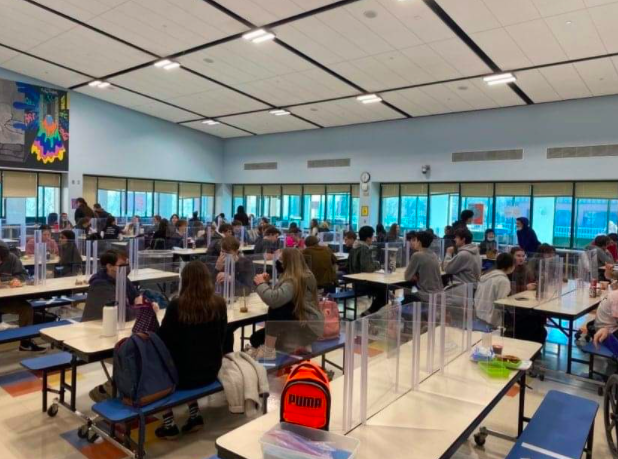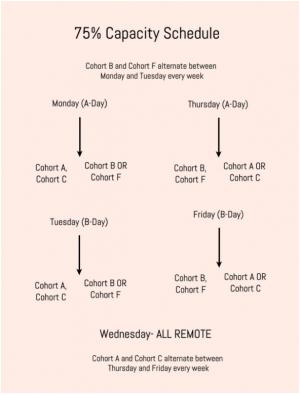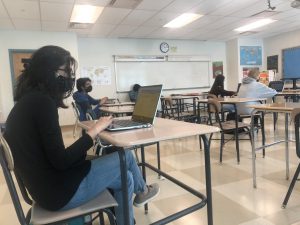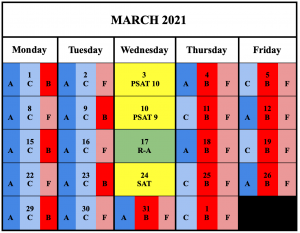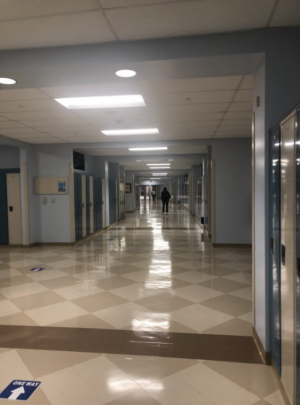Staples follows in footsteps of middle, elementary schools, progresses to 75% in-person capacity
Maskless students eat lunch in a crowded cafeteria in a 75% capacity school model.
Staples implemented a 75% capacity in-person learning model starting March 1, in which students attend school in-person three days a week.
High school parent Heather Lyons approves of the decision to increase the capacity of students in the building, but said they would have been happier with four or five days of in-school learning.
Adelle Rubinchik ’23 expresses hope that Staples will eventually return to a fully in-person model.
“But if case numbers decrease significantly and the 75% model poses no issues, I think the 100% model could work with strict guidelines,” Rubinchik said.
“I expected [the high school] to be back [fully in-person],” Lyons said. “High school years are such important years so I am disappointed, but at least it’s going in the right direction.”
Annie Toohey ’22 is unsupportive of the district’s plan to increase student capacity.
“I don’t think that it [was] a great idea to go to a 75% model [at Staples] because the current hybrid model has been working so far and we have been really fortunate to have even been able to go into school in the first place,” Toohey said.
If the 75% model proves to be safe, the district will progress towards full capacity. Both Scarice and Rosen feel much more comfortable with increased capacity now that the vaccinations for teachers are beginning to roll out.
“If [this] goes well, we will look at the next phase,” Scarice said. “[This] could include increasing the number of days that kids come in, it could include increasing the size of the cohorts that come in, or it could go all the way to a full reopening.”
Staples implemented a 75% capacity in-person learning model starting March 1, in which students attend school in-person three days a week.
With the relative success of the elementary school and middle schools’ return to full in-person learning, Superintendent Thomas Scarice concluded that it was time for Staples to follow suit.
“Overall, there has been a lot of positive feedback from kids,” Scarice said. “Kids are glad to be back full-time at that elementary and middle school level. Teachers love having all of their kids in, and not half of them on a screen.”
High school parent Heather Lyons approves of the decision to increase the capacity of students in the building, but said they would have been happier with four or five days of in-school learning.
“I expected [the high school] to be back [fully in-person],” Lyons said. “High school years are such important years so I am disappointed, but at least it’s going in the right direction.”
However, some students in the district have expressed concerns about the increased capacity. Bedford Middle School student Ella Harrington ’25 criticizes the proximity of the desks.
“I don’t feel safe because, since there are more students, the desks are closer together so we are less socially-distanced,” Harrington said. “Already there is a whole Pod in middle school that has to quarantine.”
Adelle Rubinchik ’23 expresses hope that Staples will eventually return to a fully in-person model.
“But if case numbers decrease significantly and the 75% model poses no issues, I think the 100% model could work with strict guidelines,” Rubinchik said.
Annie Toohey ’22 is unsupportive of the district’s plan to increase student capacity.
“I don’t think that it [was] a great idea to go to a 75% model [at Staples] because the current hybrid model has been working so far and we have been really fortunate to have even been able to go into school in the first place,” Toohey said.
Despite student concerns, Bedford Middle School principal Adam Rosen insists the plan to reopen is safe.
“We’ve had no instance of in school transmission at Bedford,” Rosen said. “When we were combined with BMS and CMS, or even now, we have no evidence of in school transmission at all, which we can be very proud about.”
Bedford has continued to see a decline in the number of students participating in full distance learning despite the new increase in student capacity.
“We went from 15% down to 10% distance learning,” Rosen said. “The students and community trust what we’ve been doing over here […] and as of today we’re around 5% distance learning.”
If the 75% model proves to be safe, the district will progress towards full capacity. Both Scarice and Rosen feel much more comfortable with increased capacity now that the vaccinations for teachers are beginning to roll out.
“If [this] goes well, we will look at the next phase,” Scarice said. “[This] could include increasing the number of days that kids come in, it could include increasing the size of the cohorts that come in, or it could go all the way to a full reopening.”
Lyons is fully supportive of the effort to return to full capacity.
“I think the benefits [of opening] outweigh the cons: social interaction, psychological welfare of my kid, just everything,” Lyons said. “Also seeing his teacher; it is good for certain kids who can study by themselves and advocate for themselves. But a lot of kids need to be there, in class with their teachers, so from a personal point of view, [my kid] being in school is better for his education.”













































